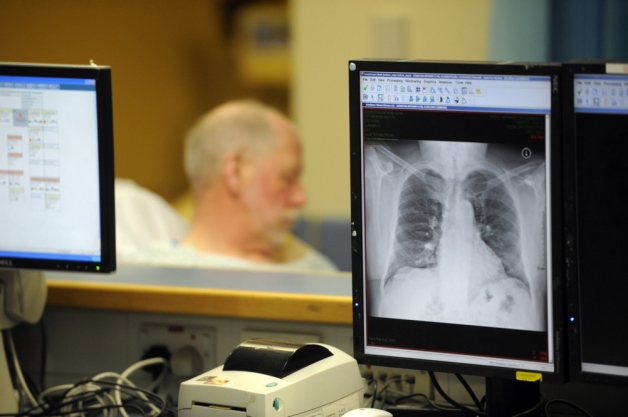Fiscal Year 2018 Boating Infrastructure Grant Program (Tier 1 - State)
Recreational boating is a popular activity; there are approximately 12 million registered boats in the United States.
Of this total, an estimated 560,000 are at least 26 feet long.
The Sportfishing and Boating Safety Act of 1998 (Public Law 105-178) established the Boating Infrastructure Grants (BIG) Program (16 U.S.C.
777g-1) to provide funding to the 50 States, the District of Columbia, the Commonwealths of Puerto Rico and the Northern Mariana Islands, and the territories of Guam, American Samoa, and the U. S. Virgin Islands (States) for the construction, renovation and maintenance of boating infrastructure facilities for transient recreational vessels at least 26 feet long that are operated, leased, rented, or chartered primarily for pleasure.
The Act amended the Dingell-Johnson Sport Fish Restoration Act (16 U.S.C.
777).
Subsequent reauthorizations of the Act allow expenditures from the Sport Fish Restoration and Boating Trust Fund and the continuation of the BIG Program.
Boating infrastructure means the structures, equipment, accessories, and services that are necessary or desirable for a facility to accommodate eligible vessels.
Transient vessels are those passing through or by a place, staying up to 15 days.
Projects completed using BIG funds must provide public access, but may be publicly or privately owned.
This document is the Notice of Funding Opportunity (NOFO) for Fiscal Year (FY) 2018 BIG Tier 1 â¿¿ State grants.
The NOFO for FY 2018 BIG Tier 2 National grants is a separate announcement at Grants.gov(F17AS00215).
Of this total, an estimated 560,000 are at least 26 feet long.
The Sportfishing and Boating Safety Act of 1998 (Public Law 105-178) established the Boating Infrastructure Grants (BIG) Program (16 U.S.C.
777g-1) to provide funding to the 50 States, the District of Columbia, the Commonwealths of Puerto Rico and the Northern Mariana Islands, and the territories of Guam, American Samoa, and the U. S. Virgin Islands (States) for the construction, renovation and maintenance of boating infrastructure facilities for transient recreational vessels at least 26 feet long that are operated, leased, rented, or chartered primarily for pleasure.
The Act amended the Dingell-Johnson Sport Fish Restoration Act (16 U.S.C.
777).
Subsequent reauthorizations of the Act allow expenditures from the Sport Fish Restoration and Boating Trust Fund and the continuation of the BIG Program.
Boating infrastructure means the structures, equipment, accessories, and services that are necessary or desirable for a facility to accommodate eligible vessels.
Transient vessels are those passing through or by a place, staying up to 15 days.
Projects completed using BIG funds must provide public access, but may be publicly or privately owned.
This document is the Notice of Funding Opportunity (NOFO) for Fiscal Year (FY) 2018 BIG Tier 1 â¿¿ State grants.
The NOFO for FY 2018 BIG Tier 2 National grants is a separate announcement at Grants.gov(F17AS00215).
Obtain Full Opportunity Text:
Cooperative Agreements to Implement Zero Suicide in Health Systems (Short Title: Zero Suicide)
Additional Information of Eligibility:
Eligible applicants are statutorily limited to: • States, District of Columbia, and U. S. Territories health agencies with mental health and/or behavioral health functions; • Indian tribe or tribal organization (the term ‘Indian tribe’ and ‘tribal organization’ are defined in section 4 of the Indian Self-Determination and Education Assistance Act.); • Community-based primary care or behavioral health care organizations; • Emergency departments; or • Local public health agencies.
A tribe, as defined at 25 U.S.C.
§ 1603(14), refers to any Indian tribe, band, nation, or other organized group or community, including any Alaska Native village or group or regional or village corporation as defined in or established pursuant to the Alaska Native Claims Settlement Act (85 Stat.
688) [43 U.S.C.A.
§ 1601 et seq.], which is recognized as eligible for the special programs and services provided by the United States to Indians because of their status as Indians.
A tribal organization, as defined at 25 U.S.C.
§ 1603(26), is the recognized governing body of any Indian tribe; any legally established organization of Indians which is controlled, sanctioned, or chartered by such governing body or which is democratically elected by the adult members of the Indian community to be served by such organization and which includes the maximum participation of Indians in all phases of its activities: Provided, that in any case where a contract is let or grant made to an organization to perform services benefiting more than one Indian tribe, the approval of each such Indian tribe shall be a prerequisite to the letting or making of such contract or grant.
An Urban Indian Organization, as defined at 25 U.S.C.
§ 1603(29), operating pursuant to a contract or grant with the Indian Health Service is a nonprofit corporate body situated in an urban center, governed by an urban Indian controlled board of directors, and providing for the maximum participation of all interested Indian groups and individuals, which body is capable of legally cooperating with other public and private entities for the purpose of performing the activities described in [25 U.S.C § 1653(a)].
Note: SAMHSA released FY 2017 Funding Opportunity Announcement SM-17-007 addressing suicide prevention entitled “Cooperative Agreements to Implement the National Strategy for Suicide Prevention (Short title: National Strategy Grants)”.
Applicants who have submitted an application for National Strategy Grants may al
Full Opportunity Web Address:
http://www.samhsa.gov/grants/grant-announcements/sm-17-006
Contact:
Gwendolyn SimpsonOffice of Financial Resources, Division of Grants ManagementSubstance Abuse and Mental Health Services Administration (240) 276-1408
Agency Email Description:
FOACMHS@samhsa.hhs.gov
Agency Email:
FOACMHS@samhsa.hhs.gov
Date Posted:
2017-05-18
Application Due Date:
2017-09-11
Archive Date:
2017-09-25
Social Entrepreneurship
Spotlight
Social Enterprises: Key to Enhancing a Nation’s Health

Glasgow Caledonian University (GCU) has launched a series of noteworthy research projects to learn if social enterprises can help Scotland lose its “sick man of Europe” label and boost the nation’s overall health.
